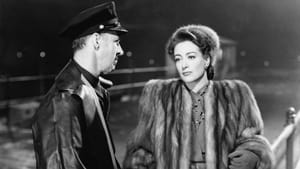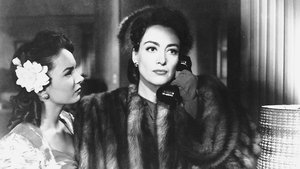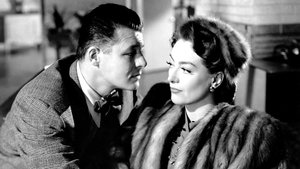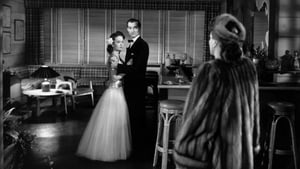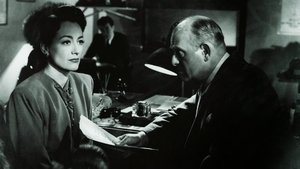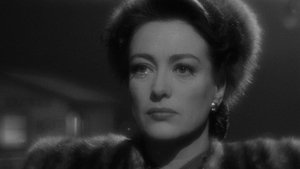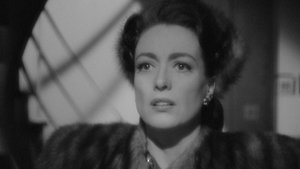Contact: info@alwanfilm.com
Video Sources 0 Views
- Watch trailer
- Mildred Pierce

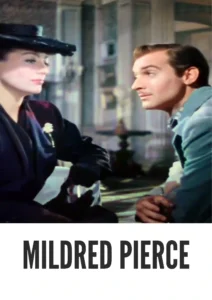
Synopsis
Table of Contents
ToggleReview: Mildred Pierce 1945 Colorized – A Classic Film Noir with a Feminist Twist

Introduction
Mildred Pierce, released in 1945, is a captivating film noir directed by Michael Curtiz. Renowned for its complex narrative, memorable performances, and feminist undertones, this classic movie continues to resonate with audiences for its exploration of ambition, sacrifice, and the pursuit of the American Dream. In this review, we’ll delve into the captivating world of Mildred Pierce and its enduring legacy in the realm of cinema.
Check The Full Colorized Movies List
Check Our Colorized Movies Trailer Channel
Understanding Mildred Pierce 1945 Colorized: Director, Cast, and Genre
Directed by Michael Curtiz, Mildred Pierce features a stellar cast led by Joan Crawford in the titular role. The film belongs to the film noir genre, known for its dark themes, morally ambiguous characters, and atmospheric cinematography.
Exploring the World of Mildred Pierce 1945 Colorized: Plot and Characters
Mildred Pierce follows the story of its eponymous protagonist, a determined woman who strives for success in the face of adversity. After divorcing her husband and struggling to make ends meet, Mildred builds a successful restaurant empire to provide for her family. However, her ambitions come at a price, leading to a series of betrayals and tragedies that test her resilience and resolve.
The Art of Film Colorization
While Mildred Pierce was originally filmed in black and white, its early colorized version adds a new layer of depth to its atmospheric visuals. The colorization process enhances the film’s rich cinematography and captures the nuances of its characters’ emotions with striking clarity.
Early Colored Films: A Brief History
The history of early colored films is marked by innovation and experimentation as filmmakers sought to enhance the visual appeal of their movies. From hand-tinted frames to pioneering technicolor processes, the evolution of colorization techniques transformed the cinematic landscape, offering audiences a new way to experience their favorite films.
Mildred Pierce (1945) and Its Early Colored Version
The decision to release Mildred Pierce in a colorized format was made with the intention of immersing audiences in its lush cinematography and enhancing the emotional impact of its story. While some purists may prefer the original black and white version, the early colorized edition of Mildred Pierce adds a new layer of depth to its atmospheric visuals and captures the emotional complexity of its characters with breathtaking clarity.
The Debate Over Film Colorization
The debate over film colorization continues to divide audiences and industry professionals alike. While some argue that colorization breathes new life into classic films and makes them more accessible to modern audiences, others maintain that it compromises the artistic integrity of the original work. As technology advances and filmmaking techniques evolve, the debate over colorization remains a topic of ongoing discussion within the film community.
Examining Mildred Pierce (1945) as an Early Colored Film
Viewing Mildred Pierce in its early colorized iteration offers audiences a fresh perspective on its lush cinematography and emotionally charged performances. The colorization process enhances the film’s visual appeal and captures the depth of its characters’ emotions with stunning clarity. As viewers are drawn into Mildred’s journey of self-discovery and empowerment, they are treated to a visual feast that immerses them in the glamour and intrigue of classic Hollywood cinema.
Influence and Legacy: Mildred Pierce 1945 Colorized’s Impact on Cinema
Mildred Pierce is widely regarded as a landmark film that paved the way for complex portrayals of women in cinema. Its exploration of female ambition, sacrifice, and resilience resonates with audiences of all ages, making it a timeless classic that continues to influence filmmakers and inspire new generations of cinephiles.
Director’s Cinematic Legacy: Beyond Mildred Pierce 1945 Colorized
Michael Curtiz’s directorial legacy extends far beyond Mildred Pierce, encompassing a diverse body of work that includes acclaimed films such as Casablanca and The Adventures of Robin Hood. As one of the most versatile filmmakers of his generation, Curtiz was known for his ability to craft compelling narratives that resonated with audiences around the world. Mildred Pierce stands as a testament to his talent and creativity, solidifying his reputation as one of the great auteurs of classic Hollywood cinema.
Themes Explored in Mildred Pierce 1945 Colorized
At its core, Mildred Pierce explores themes of ambition, sacrifice, and the pursuit of the American Dream in the post-war era. Through its complex characters and emotionally charged storyline, the film offers a nuanced portrayal of female empowerment and resilience, challenging traditional gender roles and societal expectations.
Reception and Controversy Surrounding Mildred Pierce 1945 Colorized
Upon its release, Mildred Pierce received widespread critical acclaim for its compelling narrative, memorable performances, and rich cinematography. While the decision to release the film in a colorized format sparked debate among purists, its enduring popularity has cemented its status as a timeless classic of the film noir genre.
Where to Watch Mildred Pierce 1945 Colorized Online
For those eager to experience Mildred Pierce for themselves, the film is readily available on popular streaming platforms such as Amazon Prime Video, Google Play Movies, and iTunes. Whether viewed in its original black and white format or its early colorized iteration, Mildred Pierce offers a cinematic experience that is both emotionally resonant and visually stunning.
FAQs About Mildred Pierce 1945 Colorized
1. Is Mildred Pierce based on a true story?
No, Mildred Pierce is a fictional film based on the novel of the same name by James M. Cain. While the story may draw inspiration from real-life events, its characters and plot are works of fiction.
2. Who starred in Mildred Pierce?
Mildred Pierce stars Joan Crawford in the titular role, delivering a powerful and emotionally charged performance that earned her an Academy Award for Best Actress. She is supported by a talented ensemble cast, including Jack Carson, Zachary Scott, and Ann Blyth.
3. What is the central message of Mildred Pierce?
At its core, Mildred Pierce explores themes of female empowerment, sacrifice, and resilience in the face of adversity. Through its complex characters and emotionally charged storyline, the film offers a nuanced portrayal of the challenges and opportunities faced by women in the post-war era.
4. Why was Mildred Pierce released in a colorized format?
The decision to release Mildred Pierce in a colorized format was made with the intention of enhancing the film’s visual appeal and emotional impact. While some purists may prefer the original black and white version, the early colorized edition of Mildred Pierce adds a new layer of depth to its atmospheric visuals and captures the emotional complexity of its characters with breathtaking clarity.
5. What is the legacy of Mildred Pierce?
Mildred Pierce is widely regarded as a landmark film that paved the way for complex portrayals of women in cinema. Its exploration of female ambition, sacrifice, and resilience continues to resonate with audiences of all ages, making it a timeless classic that continues to influence filmmakers and inspire new generations of cinephiles.
6. Are there any sequels or remakes of Mildred Pierce?
No, there have been no official sequels or remakes of Mildred Pierce. However, the film’s enduring popularity has inspired countless reinterpretations and homages in various media. Nonetheless, none have captured the emotional depth and complexity of the original 1945 classic.
7. Where can I watch Mildred Pierce online?
For those eager to experience Mildred Pierce for themselves, the film is readily available on popular streaming platforms such as Amazon Prime Video, Google Play Movies, and iTunes. Whether viewed in its original black and white format or its early colorized iteration, Mildred Pierce offers a cinematic experience that is both emotionally resonant and visually stunning.
Conclusion
In conclusion, Mildred Pierce (1945) stands as a timeless classic that continues to captivate audiences with its compelling narrative, memorable performances, and feminist undertones. Whether viewed in its original black and white format or its early colorized iteration, Michael Curtiz’s insightful direction and Joan Crawford’s powerhouse performance offer a cinematic experience that is both emotionally resonant and visually stunning. As viewers are drawn into Mildred’s journey of self-discovery and empowerment, they are treated to a visceral exploration of ambition, sacrifice, and the pursuit of the American Dream. Mildred Pierce remains a timeless classic that continues to inspire and resonate with audiences around the world.
